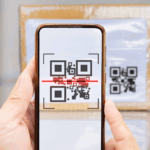Introduction
Convenience has quietly become the new currency. We want to log in faster, share files easier, approve payments instantly. Unfortunately, cybersecurity often ends up taking a back seat to that craving for speed. Each and every shortcut chips away at the layers of protection we rely on.
Modern security breaches rarely happen because of one single, giant mistake. Instead, they’re the sum of a thousand small conveniences: Saved passwords in browsers, reused credentials across platforms, file sharing through personal emails “just this once.” Each moment saves a few seconds — until the full cost comes due in the form of a compromise, data loss, or compliance violations.
When Convenience Turns into “Attacker-Friendly”
Cybercriminals understand human nature better than most technology vendors do. They know we’ll click, “Remind me later” on an update that comes through in the middle of a busy workday. They know that not everyone bothers to use a password manager. They know MFA fatigue is real. Then they weaponize these common behaviors against us.
In 2024, Apple users around the world became targets of a wave of MFA-bombing attacks, also known as “push fatigue.” Attackers sent endless login prompts and password-reset requests to iPhones, hoping frustrated users would finally tap “Allow.” Many did. Once a single approval slipped through, hackers gained access to the victim’s Apple IDs, iCloud accounts, and personal data.
This wasn’t a sophisticated exploit — it was a social engineering attack that preyed on human exhaustion and trust. It’s a perfect reminder that security isn’t just about stronger technology; it’s about helping people recognize and resist manipulation.
Why We Keep Choosing Convenience
Security and usability have always had a tense relationship. Your coworkers and third-party vendors don’t try to be reckless; they’re just trying to get their jobs done. When processes become too restrictive, people find workarounds. When policies feel out of touch with daily operations, they get ignored.
That’s not a people problem. It’s a design problem.
Security tools that frustrate users don’t get used correctly, if at all. A culture that blames users for mistakes creates avoidance, not awareness. Workplaces that reward speed over diligence set the tone for risk-taking that feels justified.
Finding Balance: Security that Works With People, Not Against Them
The path forward means that, instead of choosing between productivity and protection, you should remove that false choice altogether.
What does that mean?
- Streamline MFA: Adopt modern adaptive MFA that’s context-aware. This will help reduce friction without reducing security.
- Secure by Design: Implement password managers and single sign-on (SSO) where possible to eliminate risky habits.
- Human-Centered Training: Learn why controls exist, not just what they should do. The “why” makes it easier to remember, understand and continually practice good cyber-hygiene.
The best security is the kind that you barely notice. It works in the background, supporting users instead of interrupting them. When convenience and security stop being opposites, people make safer choices naturally.
Ultimately, cybersecurity shouldn’t make your work harder; it should make your work safer.
The post When Convenience Becomes the Enemy of Security appeared first on Cybersafe.




